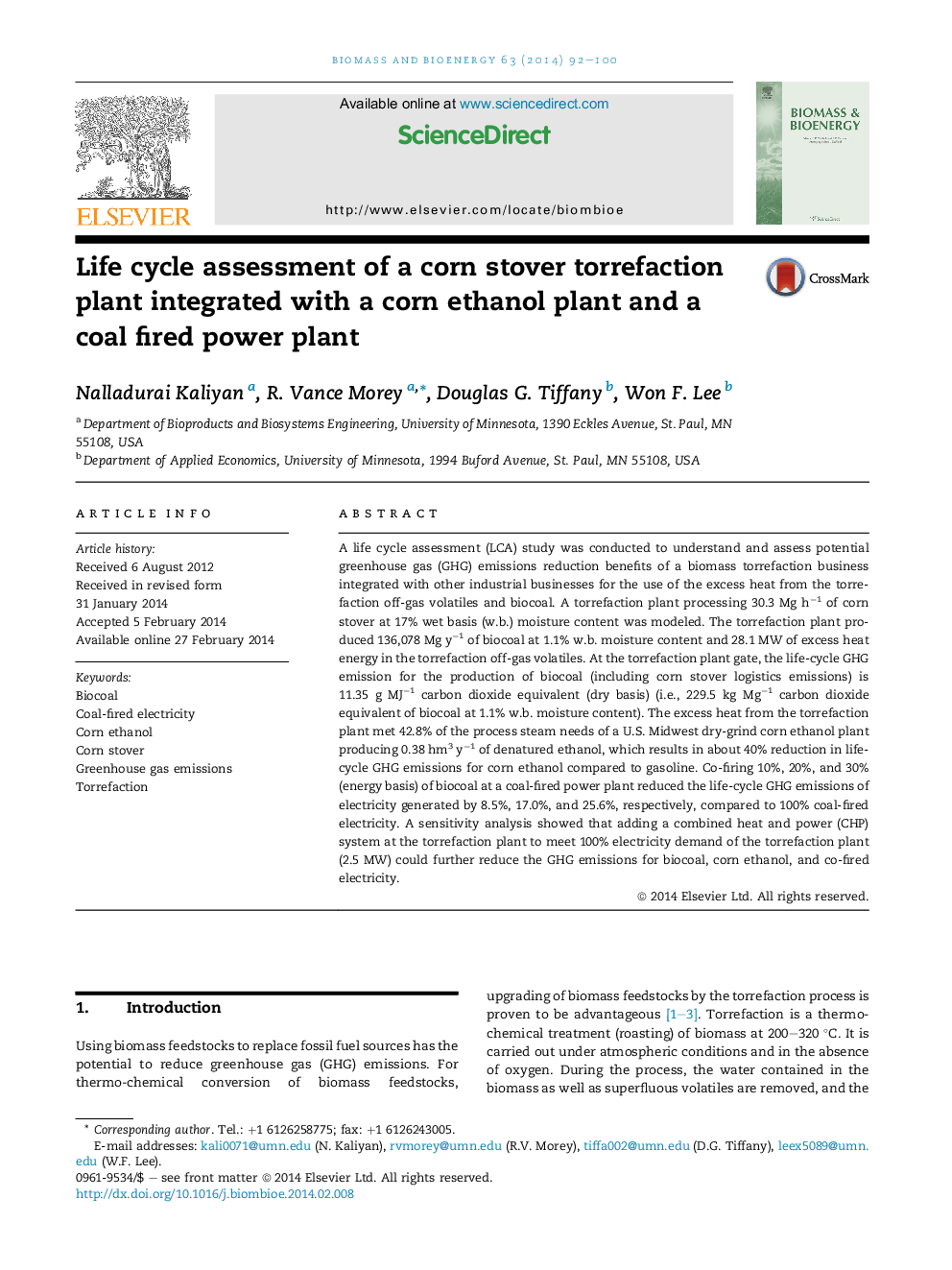| کد مقاله | کد نشریه | سال انتشار | مقاله انگلیسی | نسخه تمام متن |
|---|---|---|---|---|
| 676916 | 1459830 | 2014 | 9 صفحه PDF | دانلود رایگان |

• Life cycle GHG emission (CO2 equivalent) for corn stover biocoal is 11.35 g MJ−1.
• Using torrefaction gas for steam production reduced GHG emissions for corn ethanol.
• Co-firing biocoal with coal reduced GHG emissions for coal-fired electricity.
A life cycle assessment (LCA) study was conducted to understand and assess potential greenhouse gas (GHG) emissions reduction benefits of a biomass torrefaction business integrated with other industrial businesses for the use of the excess heat from the torrefaction off-gas volatiles and biocoal. A torrefaction plant processing 30.3 Mg h−1 of corn stover at 17% wet basis (w.b.) moisture content was modeled. The torrefaction plant produced 136,078 Mg y−1 of biocoal at 1.1% w.b. moisture content and 28.1 MW of excess heat energy in the torrefaction off-gas volatiles. At the torrefaction plant gate, the life-cycle GHG emission for the production of biocoal (including corn stover logistics emissions) is 11.35 g MJ−1 carbon dioxide equivalent (dry basis) (i.e., 229.5 kg Mg−1 carbon dioxide equivalent of biocoal at 1.1% w.b. moisture content). The excess heat from the torrefaction plant met 42.8% of the process steam needs of a U.S. Midwest dry-grind corn ethanol plant producing 0.38 hm3 y−1 of denatured ethanol, which results in about 40% reduction in life-cycle GHG emissions for corn ethanol compared to gasoline. Co-firing 10%, 20%, and 30% (energy basis) of biocoal at a coal-fired power plant reduced the life-cycle GHG emissions of electricity generated by 8.5%, 17.0%, and 25.6%, respectively, compared to 100% coal-fired electricity. A sensitivity analysis showed that adding a combined heat and power (CHP) system at the torrefaction plant to meet 100% electricity demand of the torrefaction plant (2.5 MW) could further reduce the GHG emissions for biocoal, corn ethanol, and co-fired electricity.
Journal: Biomass and Bioenergy - Volume 63, April 2014, Pages 92–100